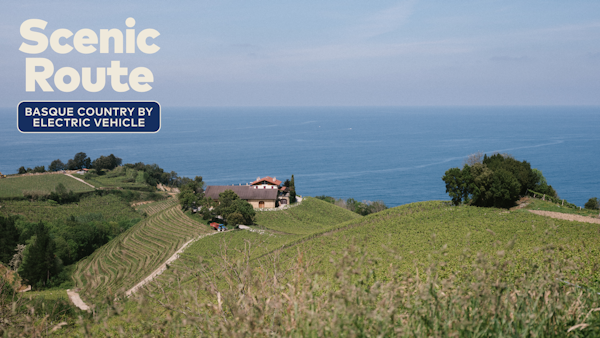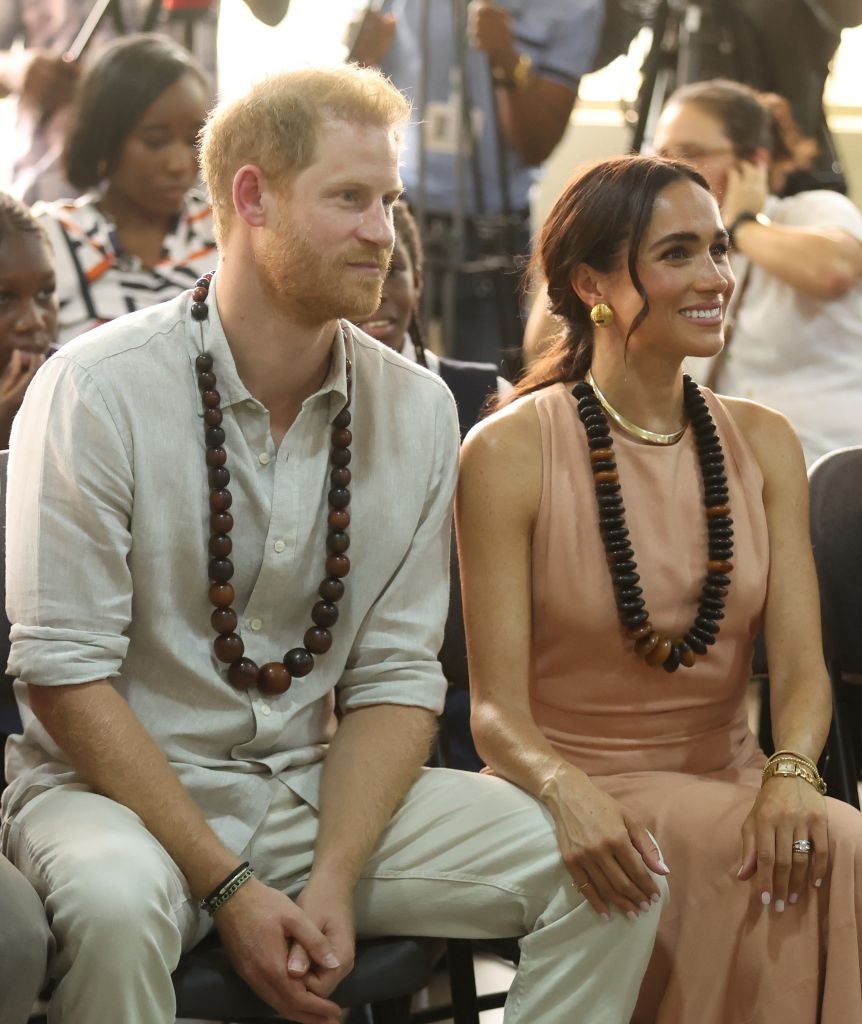

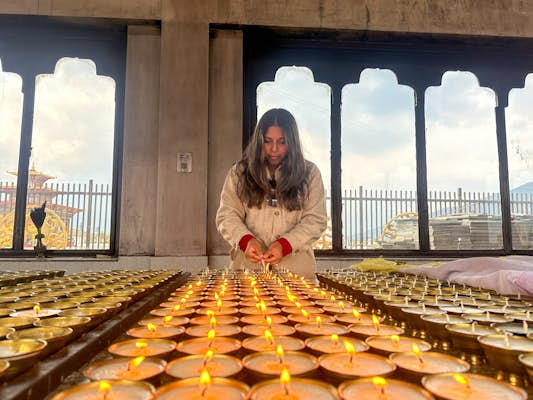
Solo female travel: the best destinations to visit in Asia
I may be biased as an Asian, but this vast continent of different countries, cities, cultures and cuisines, hosts some of the most incredible travel experiences, blending modern infrastructure with old-world charm. And traveling solo offers great freedom to step out of your comfort zone, try new things, and make lifelong friendships. Of course, as a woman traveling alone, I do need to use common sense wherever I go.
During my slow travels across Asia, mostly focusing on its culture and food, with a mix of outdoors and nature, I’ve often felt safe and welcomed by different communities I feel grateful to be visiting.
Here are six Asian destinations that I think are great for solo female travelers, and two I’m planning to visit soon.

1. Luang Prabang, Laos
I consider myself lucky to have been to Luang Prabang several times to have grown familiar with the UNESCO-listed town’s slow rhythm of life and to make friends who take me to local BBQ evenings. When I recently spent several weeks in Luang Prabang on assignment, it easily became one of my favorite solo travel experiences. Trust me, there’s hardly anything more magical than watching the sun go down over the Mekong River, either on a boat tour or from one of the cafes that line the waterfront.
Luang Prabang is tourist-centered and locals are extremely friendly, outgoing and chatty, which makes it easier to make friends. I felt completely safe walking alone in the old town, even at night, and you can cycle, hop on a tuk-tuk or book a Loca (Laos’ ride-hailing app) taxi to nearby villages.
Some of my favorite things to do include swimming in the Kuang Si Falls, and climbing Mount Phou Si for sunset. I also did the most interactive food tour here with Lao chef Somsack Sengta at the morning market and took a ferry across the Mekong to Lao Pottery House, to see how local potters preserve an age-old tradition.
If you’ve extra days, cycle across the Nam Khan River to Ban Xang Khong village, to see generational artisans at work, crafting handmade paper or weaving silk.

2. Chiang Mai, Thailand
Chiang Mai is one of Thailand’s popular tourist destinations, but it’s a far cry from Bangkok’s daily hubbub. Located in the northern countryside surrounded by forested trails, waterfalls and terraced rice paddies, Chiang Mai is a vibrant blend of Buddhist temples, a thriving coffee scene, food markets and welcoming locals who are ready to help you with patience while you stumble over common, everyday Thai phrases.
Once you are done exploring the ancient town – the center of the city – book yourself a fun cooking class, they usually include an introductory market tour. You will learn how to whip up a bowl of khao soi (a coconut curry noodle dish from Northern Thailand) while making new friends. Other highlights include exploring the Bang Kang Wat artist village (it’s also a great place to base yourself); hiking up the Monk’s Trail to Wat Phra Doi Suthep at sunrise; day-tripping to Thailand’s highest mountain Doi Inthanon; aimlessly meandering through the weekend markets like Jing Jai where local artists sell ceramics, clothes, handmade notebooks and stone jewelry.

3. Kerala, India
Many people are wary of venturing into India. Of course, with a population of over 1.4 billion, it’s crowded, chaotic and overwhelming for even the most seasoned travelers. But it’s also extremely diverse from north to south and east to west, and visiting India will be a memorable experience if you know where to go. Some of my friends started their solo journeys in Kerala in South India, and after several trips to this tropical state beaming with friendly people, a cuisine loaded with fresh seafood and spicy, coconutty dishes cooked with seasonal produce like jackfruit, and famous backwaters, it still remains one of my favorite places.
The best – and the safest – way to explore Kerala is to stay in homestays with local families that you can find on Kerala Tourism – remember to do a quick online search and read reviews to see whether a place suits you. You are also guaranteed to be showered with hospitality that’s hard to better elsewhere. I fondly remember the week I spent in Aymanam, the village of Booker Prize-winning author Arundhati Roy, boating through the backwaters where pink lotus bloom early in the morning and being fed fried fish with every meal by my host grandma. Take your time to wander through the historic Fort Kochi; chase monsoon-fed waterfalls in interior jungles; and watch sunsets in the beach town Varkala. Remember to dress modestly to respect the local customs.

4. Bhutan
I met many other solo female travelers during my trip to Bhutan and almost all of them had one thing in common: Bhutan was their first solo travel destination. According to the country’s foreign tourist policy, guides are mandatory for most parts. Since all guides and drivers are vetted by the Bhutanese government, it makes it easier, safer and more rewarding to explore this somewhat mysterious Himalayan Buddhist kingdom surrounded by temples, fluttering prayer flags and the aroma of burning incense.
Almost everyone who visits Bhutan hike to Paro Taktsang or the Tiger’s Nest, a sacred site nestled on a dramatic cliff. But don’t skip subtropical valleys like Punakha, where you can visit the Chimi Lhakhang – it’s also called the Temple of Fertility. In Phobjikha, a glacial valley where black-necked cranes from Tibet arrive in hundreds during the winter months, you can tour the 17th-century Gangtey Monastery with ornate wood carvings and Buddhist imagery.
For a more local experience, stay at Kinley Choden’s Mendrelgang Homestay to experience the Bhutanese love for chili peppers. It’s the country’s indispensable vegetable and almost everything in Bhutan is cooked with chili, like the national dish ema datshi (chilli and cheese).

5. The Maldives
Most people think the only way to explore the Maldives is to stay on a resort island – or that it’s only a honeymoon destination. This is, in fact, not true. While I sometimes love a vacation where I can pamper myself, my favorite way to experience the Maldives is to stay on a local island. On your solo trip to the Maldives you could split your time between a resort and a local guesthouse.
There are 188 inhabited islands in the Maldives, and many of them now have guesthouses and boutique hotels that are more budget-friendly than the well-known resorts. My favorite is Dhigurah, a stunningly beautiful island with a long sandbank on Alif Dhaal Atoll. Home to whale sharks year-round, it’s a great place to explore the marine world with local guides. You should also go on a sunset fishing tour on a dhoni (a traditional wooden vessel) and cycle through the island to see the Maldivian life where fishermen offload their daily catch on the shore. Local islands now have designated powdery-sand beaches where you can slip into your swimwear, but remember to dress modestly, and cover your knees and shoulders when you are in public spaces.

6. Singapore
Singapore is a great connectivity hub in the region that everyone almost just uses as a pitstop, but I recommend you stay a few days to explore one of Asia’s most economically developed countries. Ride the efficient MRT (Mass Rapid Transit) to get around; you could also walk and cycle as it’s completely safe, clean and convenient.
There’s plenty to do here, from feasting on hawker stall food in Chinatown and visiting vibrant Hindu temples in Little India to shopping at famous Orchard Road, snapping photos of the Peranakan terrace houses and visiting the Marina Bay Sands. Don’t forget to grab a spot, lie down and watch the light show at Gardens by the Bay at night when these Instagram-famed architectural greenhouses come to life with illuminating colors. If you are on a budget, stay in hostels to cut costs.
On my bucket list…

Taiwan
Ever since I saw a few TikTok videos of Jiufen, a charming old town with winding narrow alleyways lined up with teahouses and boutiques, I’ve been a fan of Taiwan. Yes, it’s not Asia’s most famous destination – it’s possibly underrated – but Taiwan is definitely on top of my bucket list for incredible food, scenic cycling routes, eclectic night markets and cool hangouts like the Huashan 1914 Creative Park. There’s also more to do beyond Taipei, like visiting the stunning Taroko Gorge or Tainan with historic temples and old streets. And with an efficient train system, the country seems perfect for my slow travels.

Uzbekistan
In recent years, Uzbekistan has emerged as a cultural tourist destination with historic architecture, bustling bazaars and a thriving art and crafts scene that includes ceramics, pottery and ancient silk paper making. I’ve seen my fellow writer friends travel through the country with so much ease while having the time of their lives. They’ve all told me that Uzbeks are some of the most welcoming people, who’d not shy away from inviting you over for a meal.
In terms of culture, there’s so much to see and do from Tashkent’s markets and Samarkand’s Registan Square – the center of Timurid Renaissance – to tasting local plov, Uzbekistan’s national rice and meat dish. I can’t wait to travel through the historic Silk Road cities of Bukhara and Khiva and navigate Tashkent’s subway, stopping at some of its remarkable metro stations.
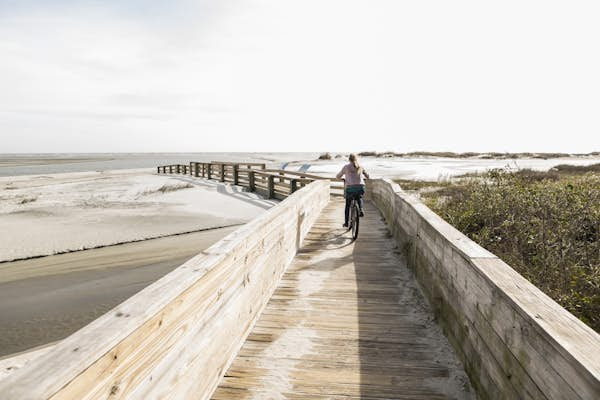
Top 7 beaches in Georgia for families, dog lovers and seashell seekers
Georgia doesn’t have a lot of coastline, a little more than 100 miles. But that stretch is packed with some of the Atlantic coast’s most unique features, and visitors would be hard-pressed to find something like it anywhere else.
This region is dotted with barrier islands, small islands formed by waves that deposit sand in the same area for several millennia. This phenomenon creates a fascinating network of tiny islands and tidal rivers that run beside them, lapping up against the mainland; marshes, lagoons and seaside forests complete the delicate landscape. The Peach State is home to 14 of these islands, each one with its own set of gorgeous beaches.
Some of these beaches are closed to public traffic to protect the wildlife living there – everything from sea turtles to wild boars and horses – but the ones open to the public offer just as much natural diversity. Visitors come to Georgia’s island beaches to walk near-empty white sand beaches, photograph the bones of an old forest, and catch breath-taking sunrises every morning. Here’s a list of our favorite stretches of sand – which one will you pick?

1. Driftwood Beach, Jekyll Island
Driftwood Beach may feel a bit eerie upon first glance thanks to the gnarled trunks of live oak trees that punctuate the shore, a result of beach erosion that’s caused the forested home of these majestic hardwoods to creep closer to the ocean’s edge. What beach-goers have now is a popular coastal strip that’s a favorite for families, and anyone looking to capture unique photos. Prepare to be joined by several photographers if you plan to shoot the sunrise.
Planning tip: There’s a $10 daily parking fee ($15 for large vehicles) for any vehicle driving onto Jekyll Island. Pedestrians and cyclists are exempt from the fee.
Read more: Get outside at these Georgia state parks

2. North Beach, Tybee Island
North Beach is a haven for those who love to be active on the water, whether you enjoy surfing, sea kayaking and jet skiing – take lessons or hit the waves on your own. Visitors often report seeing dolphins from their vantage point on North Beach, but serious seekers can also book a dolphin tour to get a little closer. Georgia’s oldest and tallest lighthouse is a stone’s throw away – the Tybee Island Lighthouse was originally built in 1773, then partially rebuilt after the top half was destroyed in 1861 during the Civil War.
Planning tip: Tybee Island pays for public services via its parking fee. There’s no free public parking on the island between the hours of 8 am to 8 pm, so plan to shell out about $4/hour no matter where you park, including the spots near North Beach.

3. Stafford Beach, Cumberland Island
If you’ve been longing for a solo day on an empty beach, Cumberland Island will feel like a dream come true. Cumberland Island is a National Seashore, which means it’s protected and preserved by the National Park Service (NPS) and doesn’t allow commercial development or personal vehicles. Only 300 people are allowed on the island each day, most of whom are day-trippers who come to see the Dungeness Ruins. Stafford Beach is a 3.5-mile hike away from the ferry drop, so either bring a bike on the boat with you or prepare for a walk. Determined souls will be rewarded with miles of powdery-white sand and calm waters all to themselves.
Planning Tip: Reservations are required ahead of your visit to Cumberland Island. If you plan to stay overnight, book a room at the island’s only hotel, the Greyfield Inn, or reserve a campsite from the National Park Service (the Stafford Beach campground is closest to Stafford beach). It’s also possible to take a day trip to the island. There’s only one company that offers ferry rides, and it leaves from St. Marys a couple times a day.
Read more: Hit the trail with the best hikes in Georgia
4. St. Andrews Beach, Jekyll Island
Make sure you don’t overlook the river-facing beaches on Georgia’s barrier islands! St. Andrews Beach offers visitors calm waters full of seafoam, and it’s a great spot for birding, shelling and dolphin sightings. Just a few feet from the sand is The Wanderer Memory Trail, a short hiking trail parallel to the coast that tells the story of the passengers of The Wanderer, a slave ship that illegally transported more than 400 people to Jekyll Island after the international slave trade was outlawed in the United States.
Planning tip: Double the fun of your beach trip by visiting Driftwood Beach and St. Andrews Beach together. The beaches are about seven miles apart on Jekyll Island and can be reached by car or bicycle.
5. East Beach, St. Simons Island
Warm water and white sand make East Beach on St. Simons a favorite for a majority of Georgia beach enthusiasts. The sand is packed in tight here due to the tides, which makes it ideal for biking along the coastline. St. Simons island’s beaches also get credit for being more pet friendly – unleashed dogs are permitted anytime of year after 6 pm and before 9 am, and they are allowed free reign in the afternoons outside of the busy summer months.
Read more: Pick the best time to visit Georgia for your trip

All The Most Infamous Co-Star Feuds Through Film And TV History
After four years of fan speculation, Tom Holland and Zendaya finally went public with their relationship in 2021, so this one’s for you, Tomdaya fans. L’OFFICIEL dives into the relationship timeline of one of Hollywood’s most beloved young celebrity couples.
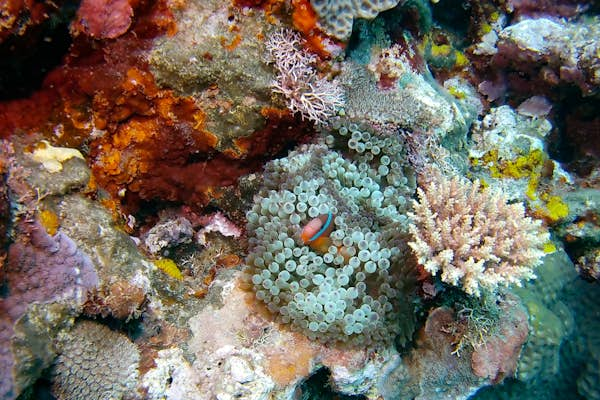
A guide to Vanuatu’s best snorkeling and scuba diving
Due for a diving holiday? Clear tropical waters, colorful coral reefs and a plethora of wrecks combine to make Vanuatu one of the best scuba diving destinations in the South Pacific. But there are also plenty of opportunities for snorkeling across the 80-plus island archipelago, also known for its wild landscapes and rich kastom (traditional) culture. From top dive sites to the best places to get certified, here’s a quick guide to exploring Vanuatu’s underwater world.
Where are the best places to dive in Vanuatu?
Diving in Vanuatu is predominantly resort-based, with the industry concentrated on three main islands: Efate, home to the capital Port Vila and Vanuatu’s main international airport; Espiritu Santo (just Santo to locals), which welcomed direct flights from Brisbane, Australia, in 2024; and the more remote and less developed island of Tanna, a 40-minute flight from Port Vila.
Most divers will have heard of the immense wreck of the SS President Coolidge in Santo, but there are plenty of other wrecks, reefs and caverns to explore across Vanuatu’s diving hubs.

What’s so special about the SS President Coolidge?
Originally a luxury ocean liner launched in 1931 that went into service as a troop carrier during WWII, ‘The Coolidge’ was accidentally sunk in 1942 by US mines just off Luganville, the largest town on Santo. Almost 200m (656ft) long and 25m (82ft) wide, the coral-encrusted ship is now a popular shore dive with around 50 sites to explore, depending on your certification level.
Resting on its port side at a depth of between 21m (69ft) and 70m (230ft), The Coolidge is best suited to advanced divers, though open water divers can still enjoy a fun dive along the starboard hull towards the bow, where some artifacts from deeper in the ship have been stored for recreational divers to see. Advanced divers can ogle jeeps in the cavernous Cargo Hold 2, while certified technical divers can dive into the ship’s sunken swimming pool at 57m (187ft).
Where else can I dive in Santo?
Another popular dive near Luganville is Million Dollar Point, a dumping ground for thousands of tons of US construction equipment during WWII. There are also a trio of plane wrecks off Santo that includes a rare birdcage Corsair fighter, while Tutuba Point off the north coast is known for its rich corals and swim-throughs. Just south of Luganville, Aore Wall is adorned with sea fans, while Cindy’s Reef offers a relaxed drift dive teeming with anemone fish.
What’s the diving like in Efate?
Divers can explore more than 20 dive sites off the coast of Efate. More popular dives close to the capital city of Port Vila include the Twin Bommies, which attract an array of fish and critters; the Cathedral, a spectacular limestone chimney; and Ollie’s Lolly, a shallow reef near Hideaway Island with a rare red anemone. Beginner-friendly wreck dives include the Bonzer, a small tugboat with a vast anemone garden, while more experienced divers can explore wrecks like the Star of Russia, a 90m (255ft) three-masted ship built in the same Belfast shipyard as the Titanic.
Just off Efate’s northwest coast, Tranquility Island is another popular diving location. The top draw here is Owen’s Reef with its colorful soft corals and fans, giant brain corals and fields of staghorn corals.

What are the best dive sites in Tanna?
With just one dive center on the island (Volcano Island Divers at White Grass Ocean Resort and Spa) Tanna’s 10 dive sites are blissfully uncrowded. The resort is just a few minutes’ walk from Tanna’s showpiece dive sites: Blue Hole One and Blue Hole Two. These sites aren’t classic limestone sinkholes like Belize’s iconic Great Blue Hole, but rather azure openings in the shallow fringing reef that have created natural aquariums. Accessible from the shore, both sites feature a network of interconnected grottos, caves, caverns and swim-throughs that connect to the outer reef wall.
Another popular site is the Blue Cave Aquarium, a magnificent amphitheater that can only be accessed underwater. More experienced divers can spot pelagics including barracuda, yellowfin tuna and reef sharks at Kamitua Reef.
What types of marine life will I see on a typical dive?
Vanuatu’s reefs showcase a variety of hard and soft corals that attract an array of tropical fish (batfish, damselfish, angelfish, triggerfish, parrotfish and anemonefish are just some of the locals) and critters including nudibranchs, flatworms, giant moray eels and crustaceans like anemone shrimps and lobsters. Turtles, rays and reef sharks are frequent visitors, and lucky divers may even encounter a dugong. Anemone gardens abound on shallow reefs.
While most of Vanuatu’s reefs are in decent condition, ongoing threats of climate-related coral bleaching, storm damage, crown-of-thorns starfish and overfishing can impact the quality of coral and diversity of marine life you may see.
Where is the best place to learn to dive in Vanuatu?
Dive courses are available on all three islands, but the calm and shallow bays of Efate are particularly ideal for learning. With its own dive center and a range of dive sites on its doorstep, Hideaway Island Resort (just a four-minute ferry ride from mainland Efate) is a popular choice. In downtown Port Vila, Big Blue Vanuatu is a convenient option for travelers staying locally.
On Santo, Pacific Dive also offers technical courses for divers interested in learning how to dive deeper than the recreational limit of 40m (131ft) – perfect for exploring the depths of The Coolidge.

What is the best season to dive in Vanuatu?
Diving is a year-round activity in Vanuatu, though many divers opt to avoid the peak of the rainy season from December to March. While light rain doesn’t tend to affect underwater visibility in Vanuatu, bigger storms can make diving unsafe.
Where are the best spots for snorkeling in Vanuatu?
Many of Vanuatu’s dive sites can also be enjoyed by snorkelers. Some of the best snorkeling on Efate is on Tranquility Island’s house reef, known for its turtles; and in Hideaway Bay’s marine park, where you can “send” a waterproof postcard from an underwater post office located in a shallow coral garden. On Tanna, confident snorkelers can take a short freedive into the Blue Cave Aquarium at low tide, while the main pools of Blue Hole 1 and Blue Hole 2 can be accessed by snorkelers from the shore.
While the Coolidge is too deep for snorkeling, it’s possible to snorkel at Cindy’s Reef as well as shallow areas of Million Dollar Point. For a chance to snorkel with a dugong (or five), book a snorkeling tour to neighboring Aese Island with Santo-based snorkeling operator Best Snorkeling in Santo Vanuatu. Vanuatu’s remote Maskelyne Islands are another popular spot to snorkel with dugongs.
Do I need to bring my own dive gear?
Most dive centers offer rental gear, but as quality can vary, some divers prefer to bring their own mask and dive computer (which aren’t always available to rent). Rental snorkel gear offered by hotels and snorkel tour operators can be low quality, making it a good idea to bring your own.
What are the diving safety standards like in Vanuatu?
Vanuatu dive operators are required to be licensed, but safety standards can vary between dive centers and dive guides. With the only hyperbaric chamber in Vanuatu located in Port Vila, and more serious injuries and medical conditions requiring medical evacuation to Australia, New Zealand or New Caledonia, diving insurance with adequate evacuation cover is strongly recommended.


